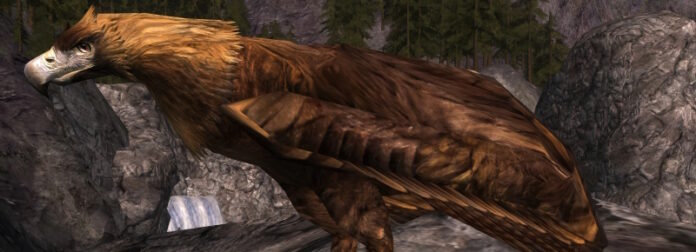
Despite the title up there, this column isn’t really about flying. I’m just getting that out of the way right here. I actually have no problem with flying in most MMOs. My first main online RPG was City of Heroes, and when I hit level 14 and could finally fly, it felt as if the shackles had come off my ankles and I was able to slip the surly bounds of the planet.
And really, flying can be a whole lot of fun in online spaces. It gives us a new perspective, greater freedom to explore, useful convenience, and another type of mount for cash-strapped studios to sell in the store. But it’s never had a place in Lord of the Rings Online, and it never should, because it would ruin one of this MMO’s greatest strengths.
The truth of the matter is that even if Standing Stone Games performed an abrupt 180 tomorrow and announced that, yes, flying would come to the game — perhaps with tricked-out eagles — it most likely couldn’t happen without extensively reworking the entire landmass of the game. LOTRO was never designed to allow unfettered flight, after all.
To both the community and studio’s credit, it’s not a subject that’s ever been seriously considered, either. Oh sure, once in a while someone will make a crack about how Sam and Frodo took an Airbus from Mount Doom back to Rivendell, but you don’t see a lot of “flying envy” in this game.
It’s important to understand why that is because it’s here that we start to see what truly sets LOTRO apart: its sense of world. Above and beyond any Lord of the Rings video game team to date (and I wager any to come in the near future), LOTRO’s devs have been committed from Day One to crafting a game world that was authentic and true to the books. This didn’t mean an exact 1:1 precision, as any adaptation has to take liberties to fit a book into a different format, but that when the details couldn’t be accurately replicated, the “spirit” of Tolkien’s writings would remain intact.
When I look around LOTRO’s Middle-earth, I don’t see a playground where kids of all ages go to romp and frolic. It’s not some weird patchwork quilt of radically different biomes stitched together in an illogical fashion. It’s not full of floating islands, impossible architecture, and magical markers shooting off particle effects hither and yonder.
It’s a place, and it exudes its place-ness very well by adhering to the rules and boundaries set by the books. I’ve said it before, but I truly believe the best decision for this game was to be hemmed in by the lore and constraints of the written work. It provided a structure that was distinctly the author’s while encouraging the devs to be creative in different directions than they might’ve if this was a wholly original IP with no restrictions.
This means that when I travel through Middle-earth, very little of it ever jars me out of the world and makes me think, “Hey, I’m playing a video game!” This cohesiveness and structure actually provides a deep level of immersion. Rohan is not Gondor, is not Mordor, is not Eriador, is not Mirkwood. These locations boast geographical, architectural, and societal marks that distinguish themselves from each other and bind all sub-regions within them together.
And by tethering the player to the (Middle-)earth, the game ensures we’re always and forever in the world rather than above or out of it. That’s why, for this title specifically, flying would not have worked. Instead, we’re encouraged to go on journeys at ground-level through all of the wilderness, cities, ruins, caves, and places of unspeakable evil. There’s no temptation to skip over it (mithril coin ports aside) because the option doesn’t exist. We soak in the details, learn the lay of the land, and fall a little more in love with this game world every day.
 Every two weeks, the LOTRO Legendarium goes on an adventure (horrid things, those) through the wondrous, terrifying, inspiring, and, well, legendary online world of Middle-earth. Justin has been playing LOTRO since its launch in 2007! If you have a topic for the column, send it to him at justin@massivelyop.com.
Every two weeks, the LOTRO Legendarium goes on an adventure (horrid things, those) through the wondrous, terrifying, inspiring, and, well, legendary online world of Middle-earth. Justin has been playing LOTRO since its launch in 2007! If you have a topic for the column, send it to him at justin@massivelyop.com.
















